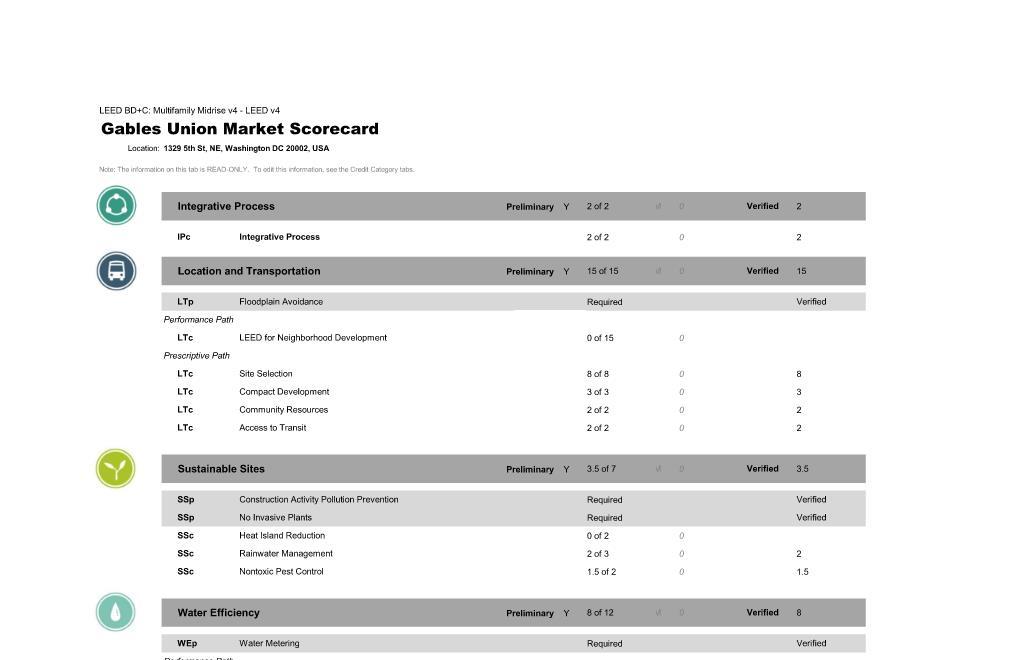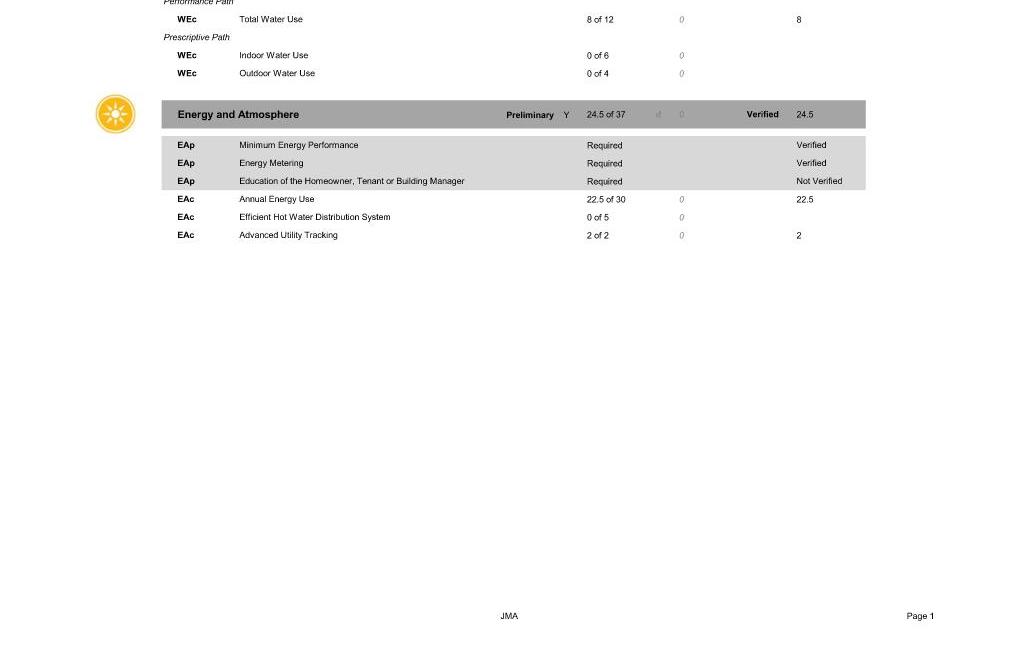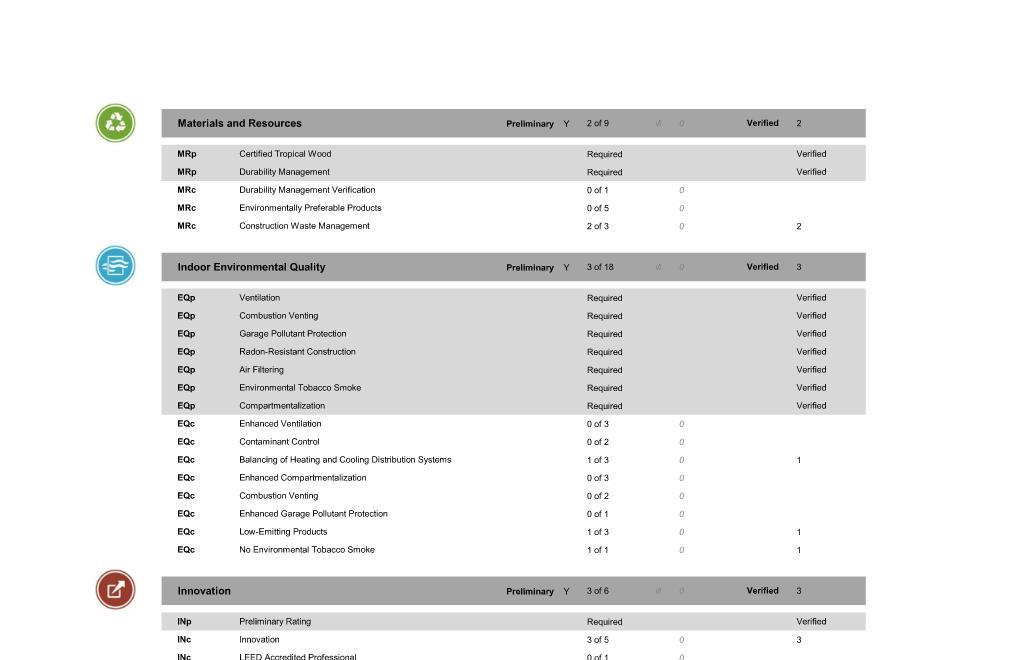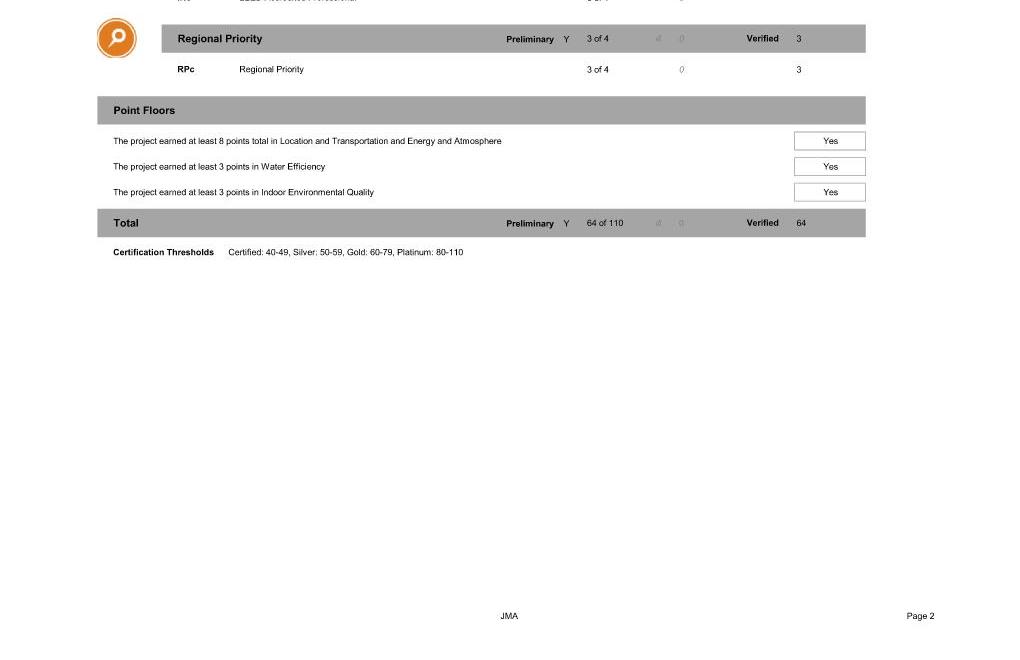










Welcome
Important Contact and Safety Information
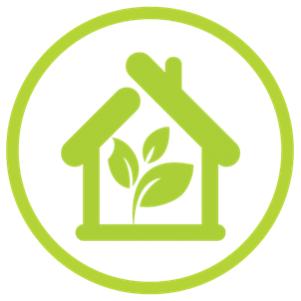



Your Green Home
What Green Means, Green Building Certification, Green Features of Your Home
Operations & Maintenance
Maintenance Checklist, Safety Measures, Top Tips for Indoor Air Quality, Green Cleaning, Pest Management, Recycling & Trash
Energy & Water Conservation
Track Your Usage, Lighting Tips, Thermostat, Heating and Cooling Tips, Kitchen Appliance Tips, Laundry Tips, Water Saving Tips
Sustainable Living
Tips for Sustainable Living, Your Community, Fresh Local Food, Staying Active, Transportation Options, Green Power
Appendix: Equipment and Fixtures Installed in Your Home
LEED Multifamily Midrise Scorecard
Created by:

New York, NY • Norwalk, CT • Washington D.C. • Boston, MA www.swinter.com
The purpose of this resident manual is to offer you tools, information and resources to help you create and maintain a green and healthy home, community, and lifestyle.

• Provides guidance on maintaining and operating your home

• Offers tips and suggestions for creating and maintaining a healthy and green lifestyle
• Outlines building policies and procedures

• Provides maps of nearby amenities, including public transportation and local parks
• And much more!
Please refer to your lease agreement for specifics on building policies and regulations.
Welcome Home!
If you are experiencing a health or safety emergency DIAL 911
Building Concierge
Building Maintenance
Leasing Office
202.505.9444
202.505.8678
202.505.9445
Police Non-Emergency Line 311
City Information https://dc.gov/
Regional Transit
202.637.7000 / https://www.wmata.com/
Washington DC
Police Non-Emergency Line
202.727.9099
City Information (any topic) dial 311 or online 311.dc.gov
Metropolitan Transit Authority
202.637.7000 or online www.wmata.com
Our policies are designed to ensure the comfort and safety of all residents.
Cats and dogs under 75 lbs with valid vaccinations are permitted. Please be courteous of your neighbors Pets must always be on leash in common areas, and owners must clean up after their pets. Pets that trigger 3 or more noise complaints may be asked to leave.
Rent is due on the last day of each month. Late rent incurs a 3% penalty.
Coin operated common laundry rooms are available on each floor. Machines are first-come first-served. Please be respectful of fellow residents by removing loads promptly after each cycle completes, freeing up the machine for the next user. For issues with machines, contact the vendor.
Paid parking is available beneath the building. Parking spots are first-come firstserved. Please observe spaces marked for differently abled individuals, as well as spaces marked for low-emitting vehicles.
Residents will be given 2 key cards per dwelling unit. Key cards are used to access the outside doors as well as the rooftop terrace. If you experience problems with your key card, contact Building Management.
Emergency call stations are located in the bedrooms and bathrooms of every apartment. If a resident pulls the emergency cord, (i) a light outside their apartment door illuminates, allowing neighbors to see there is a problem; (ii) a light at the building security desk alerts staff (if on duty) of a problem; and (iii) most significantly, the system is tied into a 24 hour monitoring agency. Once a signal is received, a call is immediately placed to dispatch emergency personnel.
Any resident who has medical waste, such as used needles, must dispose of the waste in the proper manner. Please check with your medicine supplier to obtain proper containers for such disposal.
Green building is often described in terms of “the triple bottom line.” This is because a green building has three overarching goals: The Triple Bottom Line
1. To protect the health of people living and working in the building;
2. To protect the natural environment; and
3. To be cost-efficient over its lifespan by reducing costs for maintenance and utilities, and even intangibles like social justice, human health, and environmental costs.

Where People, the Planet, and economic Prosperity overlap, we see the intersection of sustainable or green building. These two terms are often used interchangeably, but the idea behind them extends beyond just protecting the planet.
Your green home should be comfortable and healthy, have low utility bills, provide better air and water quality, and conserve natural resources.

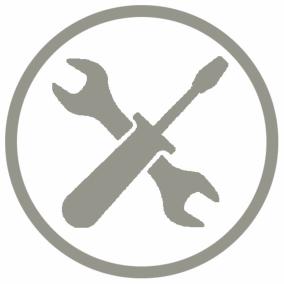
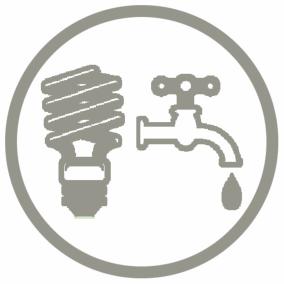

This is a LEED® for HOMES v4 Gold certified building. The U.S. Green Building Council created the Leadership in Energy and Environmental Design (LEED) rating systems to recognize buildings that are better for the environment, for their occupants, and for the wallet of those paying to operate and maintain them. LEED for Homes is a global green rating system that recognizes homes built to be energy efficient, water conserving, durable, and healthy.
To achieve LEED certification, a project needs to include features in nine categories:
IP Integrative Process
LT Location & Transportation
SS Sustainable Sites
WE Water Efficiency
EA Energy & Atmosphere
MR Materials & Resources
EQ Indoor Environmental Quality
IN Innovation
RP Regional Priority

To learn more about the LEED for Homes rating system, please visit www.usgbc.org/articles/getting-know-leed-homes-design-and-construction




While your new home may not look different than other places you have lived, it was designed and inspected to protect humans and the environment. Goals of a green home are comfort, healthy indoor air quality, energy efficiency, water efficiency, and durability. At the same time, green homes seek to reduce carbon emissions, protect natural resources, and foster biodiversity.
Green features of this building include:
• Superior insulation (walls, roofs, windows and doors)
• High-efficiency heating, cooling, and hot water equipment
• Ventilation systems to provide fresh air and remove humidity and pollutants
• High efficacy air filters
• ENERGY STAR® lighting and appliances
• Native and drought-tolerant landscaping
• Stormwater infiltration measures
• Light colored roofing
• Low-emitting paints and primers
• Locally sourced materials
• Construction waste recycling
• Proximity to parks, transportation, and a vibrant neighborhood
• Indoor gathering and recreation space
• Bicycle storage in garage
A full LEED project checklist can be found in the Appendix.









All homes, big and small, require maintenance to remain in top working order. With proper maintenance, this building should be healthier, more durable, and less costly to operate. The Appendix contains a detailed list of the equipment and fixtures located in your home that you will operate, along with links to the manufacturer’s instructions for operations and maintenance. The checklist below is designed to help you develop a regular maintenance schedule. Management typically handles items in orange.
InteriorWalls,Ceilings,Doors,Windows
Check for signs of water damage
Check operation of windows/doors
Check for rodents/pests
AppliancesandPlumbingFixtures
Check and clean refrigerator coils
Check and clean plumbing drains
Check hot water heater for leaks
Check clothes washer for leaks
Check toilet, tub and shower for leaks
Check exhaust fan operation
Vacuum exhaust fan grilles
Check kitchen range hoods & clean filters
Clean dryer hose connection and outlets
Electrical,HeatingandCoolingEquipment
Clean AC coils, drains, and pans
Replace air filters
Check smoke and CO alarms
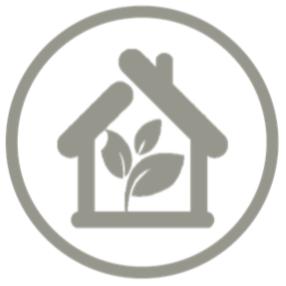
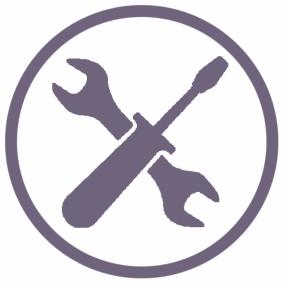


Your home is equipped with several safety features. Study where these items are located now so that you can easily locate them in an emergency, and inspect them regularly to ensure that everything is in working order. Doing so may one day save a life!
Smoke and carbon monoxide detectors are installed to provide early warning against deadly smoke and colorless odorless carbon monoxide. Never dismantle alarms. If they start chirping, replace the batteries. At least twice per year, test your detectors by pressing the button in the middle. Contact management if there is ever a problem with your detectors.
Locate the fire extinguisher nearest to your apartment in the corridor now, so you can access it quickly in an emergency. You may also wish to purchase your own fire extinguisher to keep in the kitchen. Check the fire extinguisher’s label annually to make sure yours is up to date.

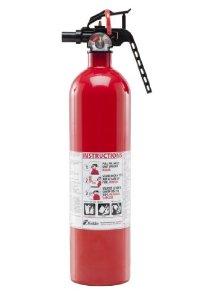
There is an electrical panel located inside your apartment. Take a moment to locate it so that you will be ready to deal with electrical issues that may arise such as a tripped circuit.
Water service to kitchens and bathrooms can be turned off with the valves located under each sink. Clothes washers are equipped with a single-throw shutoff valve to quickly stop water in the event of an overflow. Contact management for any plumbing issues.


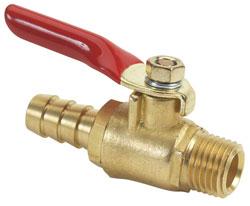





If the fire is in your apartment:
• Close the door to the room where the fire is and leave the apartment
• Make sure EVERYONE leaves the apartment with you
• Take your keys and close, but do not lock, the apartment door
• Alert people on your floor by knocking on their doors on your way to the exit
• Use the nearest stairwell to leave the building. DO NOT USE THE ELEVATOR
• Call 911 once you reach a safe location. Do not assume the fire has been reported unless firefighters are on the scene
• Meet the members of your household at a pre-determined location outside the building. Notify the firefighters if anyone is unaccounted for
If the fire is not in your apartment:
• Stay inside your apartment and listen for instructions from firefighters unless conditions become dangerous
• If you must exit your apartment, first feel the apartment door and doorknob for heat. If they are not hot, open the door slightly and check the hallway for smoke, heat, or fire
• If you can safely exit your apartment, follow the instructions above for a fire in your apartment
• If you cannot safely exit your apartment or building, call 911 and tell them your address, floor, apartment number and the number of people with you
• Seal the doors to your apartment with wet towels or sheets, and seal air ducts or other openings where smoke may enter
• Open windows a few inches at top and bottom unless flames and smoke are coming from below
• Do not break any windows
• If conditions in the apartment appear life-threatening, open a window and wave a towel or sheet to attract the attention of firefighters
• If smoke conditions worsen before help arrives, get down on the floor and take short breaths through your nose. If possible, retreat to a balcony or terrace away from the source of the smoke, heat or fire




This building was designed to promote healthy indoor air. Here are some tips to help keep your home free of common asthma and allergy triggers.
1. Report Problems Immediately
Immediately contact management if you notice water leaks, pests, mold, smoke or odors. Small issues can turn into big ones if left unreported.
2. Practice Good Housekeeping
Clean up food waste daily, avoid collecting boxes/papers/magazines, check cupboards and corners for pests and mold, and maintain a regular cleaning routine. Use green cleaning tips included in this guide to avoid introducing toxic chemicals to your home.
3. Use Exhaust Fans
Exhaust fans have been provided in your kitchen and bathrooms. Be sure to use them whenever cooking or bathing to prevent excess moisture or combustion byproducts from accumulating in your home. Vacuum grilles regularly.
4. No Smoking
Tobacco smoke remains one of the most serious indoor air pollutants in this country, and the jury is still out on the indoor air impacts of e-cigarettes. If you must smoke, it is best to do it outdoors at least 25 feet away from any building.
5. Clear the Air
Choose furniture, paints, and cleaning products that don’t release dangerous chemicals. Look for California Air Resources Board (CARB) Phase II Compliant, GreenSeal, and Safer Choice labels. And think carefully about using air fresheners or scents, since many contain small amounts of harmful chemicals.
6. Monitor Humidity
An inexpensive humidistat can tell you whether the humidity in your home is between 30-60%, the healthiest range for people. Too dry and skin, eyes, and respiratory systems become irritated; too moist and harmful mold, mildew or bacteria might flourish. Use your ventilation systems per instructions to manage humidity, and consider purchasing a humidifier or dehumidifier if needed.




Green buildings provide ventilation in three important ways.
Common byproducts of cooking include steam, airborne grease and other fine particulates, formaldehyde, acrolein, and (if cooking with gas) carbon monoxide and nitrogen dioxide.
Your best defense against these spikes in pollution while cooking indoors is to always operate the kitchen exhaust while cooking and run for 10 minutes after cooking, even while baking with a gas oven. Your home has an exhaust fan in the ceiling (most important to operate, as this removes contamination to outdoors). You may also have a recirculating range hood. Use the range hood whenever frying foods because it has a carbon filter to catch grease and particles.
Removing humidity from bathrooms helps prevent the formation of musty smells or mildew. Your bath fan is equipped with an intermittently–run exhaust which means you turn the fan on at the wall switch and will run until shut off. And of course, bathroom exhaust helps with smells too :)

In addition to removing the contaminants in bathrooms and kitchens, a green building provides dedicated fresh air to replace the stale air we breathe. In your building, this fresh air comes from a rooftop system that delivers fresh, filtered air to the vent located above the from door of your home.




This is a Smoke-Free Building
• To be respectful to others and ensure the health and wellbeing of all residents, please smoke outside at least 25 feet from windows and doors.
• To keep our grounds clean and safe, please use an ashtray and throw away butts properly.
• Violations can lead to penalties and eviction, per the terms outlined in your lease agreement.
• If you smell tobacco or marijuana smoke, contact Management.
Why is Smoke-Free Housing Good?
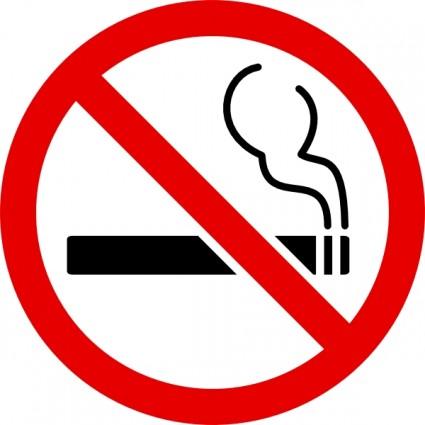
• Smoking is the #1 cause of lung cancer and shortening of lives.
• Smoking is the #1 cause of severe ear aches and asthma in children.
• Secondhand smoke is the third leading cause of preventable death.
• Secondhand smoke can cause Sudden Infant Death Syndrome (SIDS) in babies.
• Limiting exposure to smoke improves your chances of avoiding heart disease and other problems.
• Smoking poses a fire hazard and damages interior finishes.




Follow these tips to keep your home clean and everyone in it healthy:
• Sweep and mop the floors at least once per week
• Vacuum rugs or carpets regularly
• Wash dirty dishes and kitchen surfaces daily
• Wipe up spills immediately
• Clean discolored surfaces or cracked grout with baking soda or borax. If discoloration persists or gets worse, contact Management
• Open windows to let fresh air in when the heat and air conditioning are off
• Clean your stove’s range hood and grease filter
• Avoid using bristly cleaning brushes and abrasive products
• Regularly replace sponges and cleaning rags (sponges can also be disinfected by soaking wet and microwaving for 2 minutes on high power)
• Don’t mix cleaning products
• Dispose of chemical products properly
• Use Green Cleaning products, described on the following pages






It can be hard to tell whether a product is sustainable and/or healthy for you, your family, pets, or the environment. The U.S. Environmental Protection Agency (EPA) has Safer Choice resources, and some manufacturers seek other thirdparty verification of their green products like GreenSeal Certification. Use the tips below to choose responsibly, or DIY with recipes on the following page.
• Unscented
• Concentrated
• Biodegradable
• Non-toxic
• Low or no-VOC
• Phosphate free
• GreenSeal Certified
• Design for the Environment
• Safer Choice
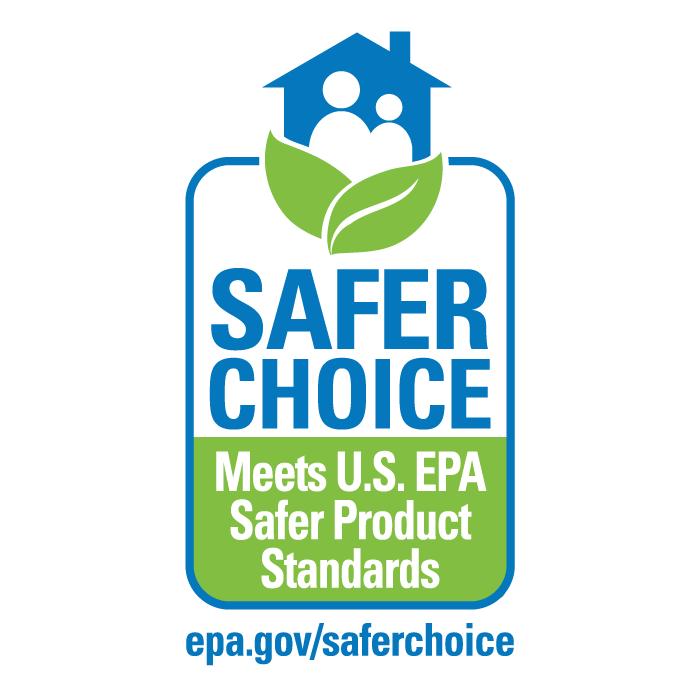


• Anti-bacteria or anti-microbial
• Highly flammable/combustible
• Danger
• Poison
• Corrosive
• Caution
• Chlorine bleach
• Ammonia







2 Tbsp. white vinegar
½ Tsp. liquid dish soap
1 Tbsp. baking soda
All-Purpose
Spray
2 Cups warm water
Combine vinegar and soap in spray bottle. Add baking soda and wait until foaming stops. Add water and shake to mix. Spray and let sit before wiping with a clean rag.
Glass Cleaner Mix 1 tablespoon vinegar in one quart water.
¼ Cup Murphy’s Oil Soap
1 Cup white vinegar or lemon juice
Peppermint Floor Cleaner
Toilet Bowl Cleaner
1 Cup very strong peppermint tea
Combine ingredients in a bucket of warm water and mix until sudsy. Scrub floor with mop or rag. Follow with a clean water rinse.
Sprinkle baking soda inside bowl. Squeeze in a few drops of Murphy’s Oil Soap or Castile Soap. Scrub toilet with a bowl brush and finish outside surfaces with a rag sprinkled with baking soda. Rinse well with clean water.
Furniture Polish Mix 1 teaspoon lemon juice in one pint mineral oil.
Rug Deodorizer
Liberally sprinkle carpets with baking soda. Wait at least 15 minutes and vacuum. Repeat if necessary.
Silver Polish
Mothball Alternatives
Drain Cleaner

Boil 2-3 inches of water in a shallow pan with 1 teaspoon salt, 1 teaspoon baking soda and a sheet of aluminum foil. Totally submerge silver and boil for 2-3 more minutes. Wipe away tarnish and repeat if needed.
Use cedar chips, lavender fowers, rosemary, mints or white peppercorns to keep moths out of clothes or bedding.
Use a plunger or plumber’s snake.



Pests can carry disease. Report pests, water leaks, holes and other conditions that can attract pests to building management immediately. Pests are often not a sign of “dirtiness” and are something that can happen to any of us.
If you do find pests, please use non-toxic pesticide products and avoid those products that are dangerous to your health, such as Raid spray and Moth Balls. Most pesticides are poisons, and they are often poisonous to humans, as well as to pests. Studies have linked some pesticides to cancer, birth defects, neurological disorders, and immune system disorders, as well as allergies.
Non-toxic solutions (such as borax), baits and traps should be used prior to more aggressive means.
The best strategy is to keep pests from coming into your home in the first place.
• Keep food in sealed containers
• Clean up food and spills right away
• Clean the kitchen regularly and don’t leave dirty dishes in the sink
• Sweep the floors regularly
• Rinse bottles before recycling
• Take out garbage and recycling regularly
• Minimize clutter and paper piles
• Carefully inspect all used furniture before you buy. Most bed bugs are carried into the home on used furniture. If you have bed bugs contact Management ASAP.






Pets can be a great addition to your family, but pet ownership in an apartment is a privilege, not a right. Please be respectful of all neighbors and staff throughout the building.
Please follow these tips on how to maintain a respectful and clean environment for all.
• Unmanaged pet waste. Pet waste transmits diseases and contaminates water supplies.
• Leash your pet. Keep your pet on a leash at all times in common and outdoor areas of the property.
• Minimize barking. Barking can be prevented by blocking their view to the outdoors, exercise, entertainment, training and positive reinforcement.
• Keep the noise down. Be courteous to your neighbors when engaging in playtime with your pet. Avoid excessive noise during quiet hours.
• Clean up. Regular vacuuming and sweeping keeps pet dander off the floor and improves indoor air quality.
• Exercise your pet. Providing adequate exercise to your pet prevents destruction of your furniture, walls and floors.
• Groom. Regular bathing and brushing of your pet prevents excessive shedding and eliminates outdoor critters from entering your home. Use preventative treatments recommended by a vet for fleas and other pests.




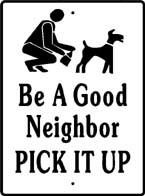

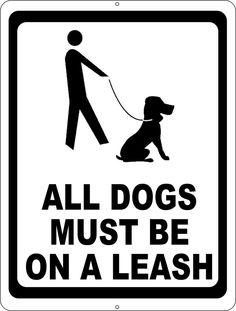
Waste is a major factor in the pollution of our soils, air, and bodies of water. Improperly sorted recycling means that manufacturers have to throw out some of the materials they receive. Handle your waste responsibly.
Deposit Trash and Recycling in the chutes in the trash room on your floor.












From NYC Dept. of Sanitation













Incorrect disposal of hazardous waste can threaten human health and contaminate air, water, and soil, harming flora and fauna. If you aren’t sure how to dispose of hazardous items, ask Management, contact a local authority, or visit EPA’s Household Hazardous Waste site https://www.epa.gov/hw/householdhazardous-waste-hhw
The following products qualify as hazardous waste and require special disposal or drop-off:
• Antifreeze
• Batteries
• Fluorescent lamps & light bulbs
• Electronics including televisions, cell phones, computers, printers & printer cartridges
• Paint & paint products
• Pool chemicals
• Household cleaners
• Medications, needles and syringes
• Mercury thermometers & thermostats
• Pesticides, herbicides & chemical fertilizers
• Camping fuel
• Anything with one of the symbols below (Corrosive, Flammable, Explosive or Poison)

To avoid having to deal with hazardous waste, consider purchasing nonhazardous alternatives in the first place. See the Green Cleaning section of this manual for ideas. Also, make sure that hazardous materials are only kept in their original labeled containers. Never put any of the items on the list above into an unmarked container that could be mistaken for something else.




Tracking your utility use—often called benchmarking—is one of the most powerful ways to ensure that your efficient home keeps on operating efficiently. A dirty air conditioner might go unnoticed, but if you are able to see changes in your typical utility usage, it can prompt you to search for the cause.
Your PEPCO account includes free detailed electric tracking and usage information when you log-in online.
From your account dashboard click on ‘View Detailed Usage.’
Under ‘View my usage’ you’ll see several links to explore your energy usage and you can drill down to monthly, daily and even hourly usage trends.
Knowledge is power! Take advantage of free benchmarking tools to keep an eye on your consumption, and keep your footprint as low as possible.
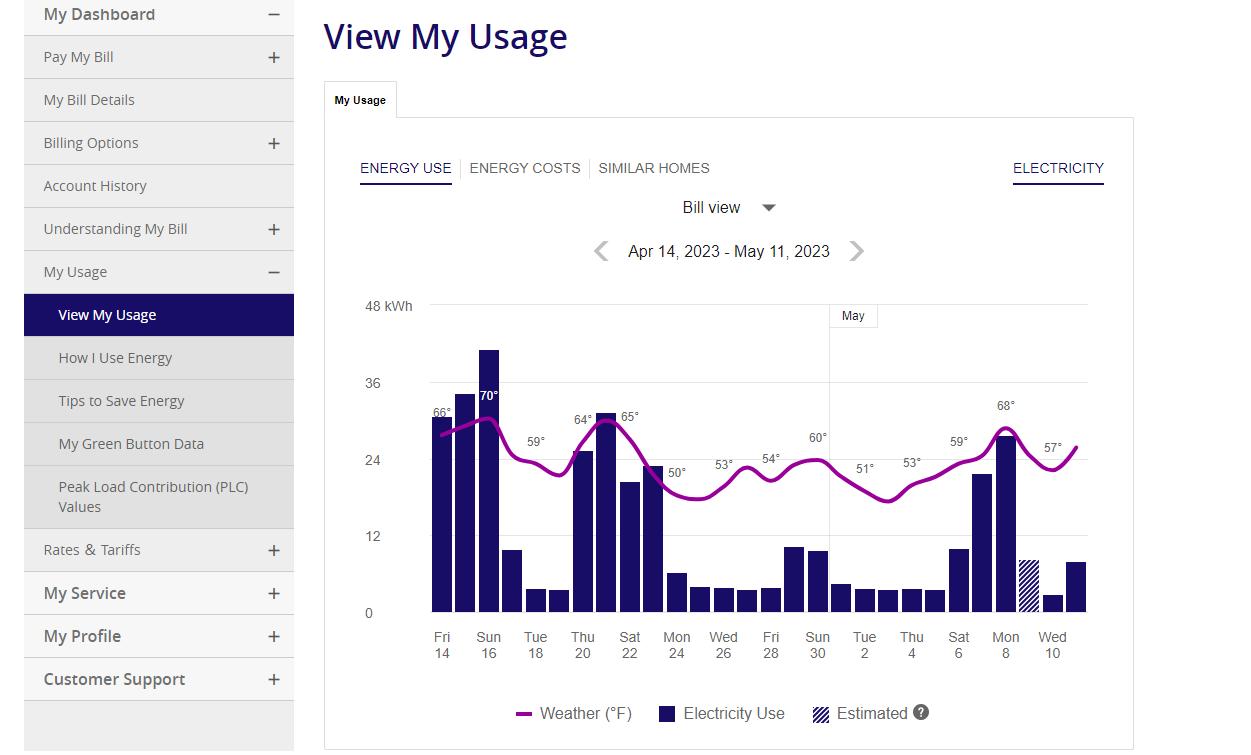




Reducing your energy consumption provides the greatest opportunity to positively affect the environment. Buildings consume approximately 39% of the energy and 75% of the electricity produced in the U.S. Better building energy performance means fewer greenhouse gases emitted. That means cleaner air and healthier people.
Savings at home have an even bigger impact in the power generation cycle because of the inherent inefficiencies in generating and transmitting power. Two thirds of electricity generated at a power plant is lost getting to your home. Think of reducing your electrical consumption at home as a way to triple your savings across the electrical grid.
Also, saving energy and water saves you money. And that is something we can all get behind.
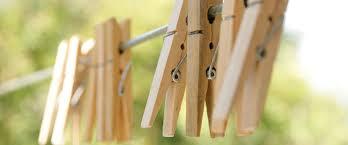




Lighting not only uses energy… it also GIVES us energy! Natural daylight is always the most efficient choice, and research has shown that daylight has important health benefits. But we still need electric lights in our homes.
Light Emitting Diode (LED) bulbs are by far the most efficient choice. Compact fluorescents are OK, but LEDs are better. Never use halogen or incandescent bulbs—they increase energy use 10x or more, AND add unwanted heat to your home. And of course, turn lights off EVERY TIME you leave a room.
Feel-Good Lighting
Did you know that lighting affects:
• Alertness
• Productivity
• Decision-making
• Sleep, through Circadian Rhythm
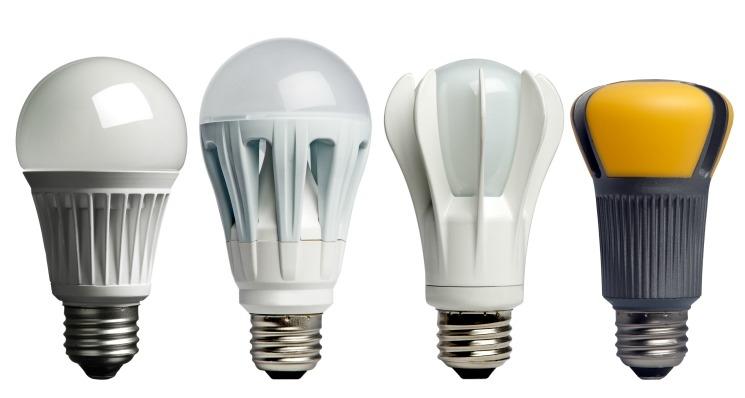
Consider customizing the lighting in your home using these suggestions:
Lighting Strategy EVENING DAYTIME
Intensity
Color Temperature
10-150 lux, or 0.9-14 lumens/SF
2700 K (warm)
300-500 lux, or 28-46 lumens/SF
5000-6500 K (very blue!)





Did you know you use the most energy to heat and cool your home? Maintaining a moderate setting is the most energy efficient and cost-effective practice. Cranking the thermostat up or down to try to change the temperature faster is inefficient and ineffective.
Programming your thermostat correctly ensures proper and energy efficient usage. A link to full instructions can be found in the Appendix.
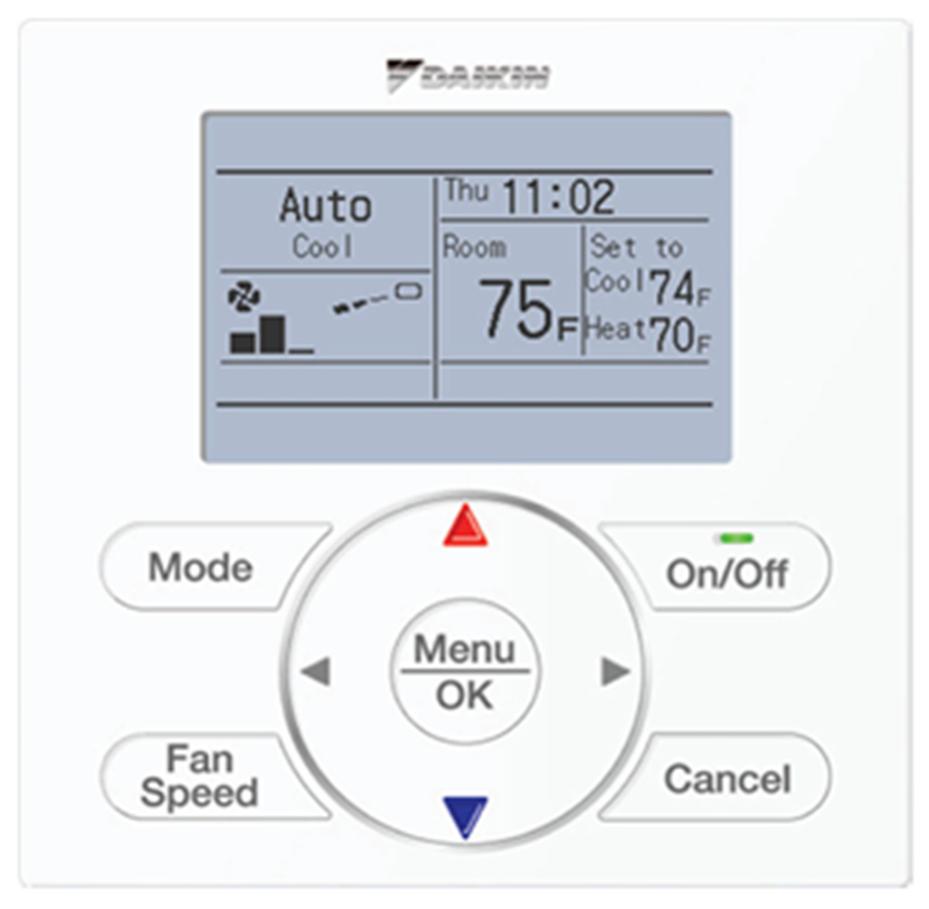
Lower your heating and cooling bills up to 20% with these strategies:
• Always set the fan to “AUTO” and never to “On”
• Use schedule feature for wake, leave and return times
• Turn system off when windows are open
• Cool Settings—select a temperature between 73 and 78
• Heat Settings Select a temperature between 65 and 70
Remember, raising or lowering the temperature an excessive amount will not heat or cool your space more quickly but it could result in higher energy bills.




Your new home has built-in energy saving features including an improved thermal envelope (insulation, windows, and exterior doors) and high efficiency heating equipment. BUT how much energy you save is primarily dependent on your behavior and choices. To get the most out of your efficient system and keep heating bills low, follow these tips.
1. Program the thermostat
In the winter, program the thermostat to automatically turn up the heat while you get ready in the morning, turn down while you’re away, turn back up in time for your return in evening, and turn down after you go to sleep.
2. Clear a path
Make sure there are no furnishings blocking heat sources.
3. Practice patience
Do not turn the temperature up to extreme levels in an effort to heat things up more quickly. It will not heat your home any faster but it strains equipment.
4. Avoid supplemental heat
NEVER use your oven to heat your home, and avoid the use of space heaters. Gas or propane appliances can release carbon monoxide (a deadly poison) and all space heaters can pose a fire hazard, as well as being costly to run.
5. Open curtains
Opening curtains during the daytime can allow you to take advantage of free solar heat gain from the sun. Keep windows closed and locked when it is cold out, of course!
6. Dress for the season
Using blankets and wearing layers cuts down on the need to turn up the heat.




Summer months often bring spikes in electric use—and more costly utility bills. Keep your cool with these tips for best efficiency.
1. Fans cool people, not rooms
Fans are great to stay cool in summer, but they cool people through evaporation; they do not cool down rooms. Turn them off every time you leave a room. A running fan in an empty room actually adds a small amount of heat from the motor.
2. Close the curtains
Close the curtains, blinds or shades during the daytime to keep solar heat out. This is the opposite of our wintertime tip.
3. Set the air conditioner temp to 78ºF or Medium
Most people can be comfortable at 78ºF. During cooler nights, open windows and turn the AC off. Never open the windows when the AC is on!
4. Dress seasonally
Keep cool with light-weight fabrics and summer garb indoors as well as outdoors.
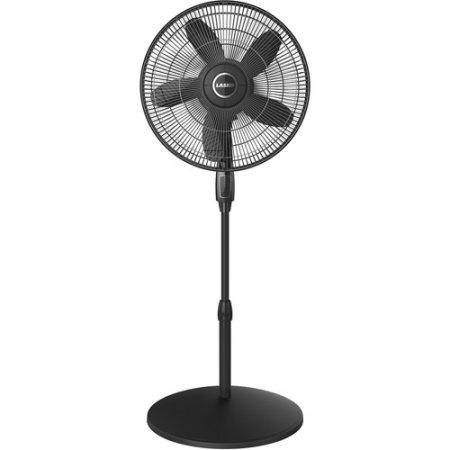
The amount of energy consumed in the U.S. every year to power our air conditioners is about the same as the amount of energy consumed by the entire continent of Africa. — Stan Cox, Yale University, 2012




1. Set the temp
Set fridge temp 35 to 38ºF and freezer –4 to 0ºF.
2. Promote circulation
Leave a few inches between the fridge and walls behind and on the sides. Pull the fridge out and clean the coils behind once a year.
3. Close the door
They aren’t showing a movie in there! Plan what you need before opening the door. If the seals around the door don’t seem airtight, contact management.
1. Scrape, don’t rinse
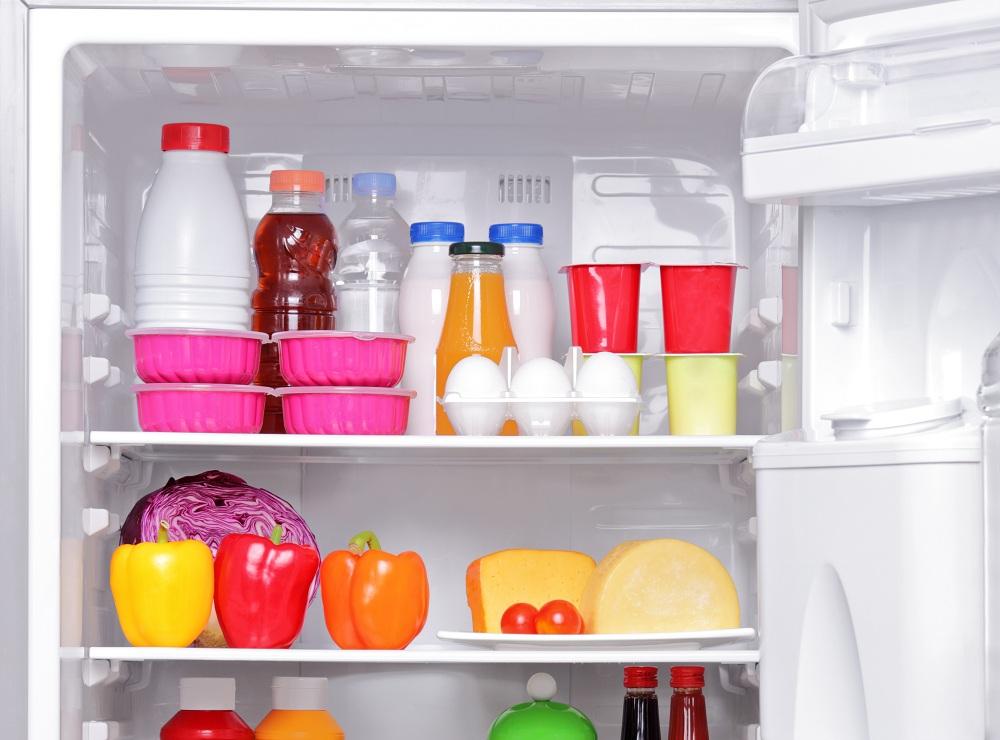
Rinsing dishes can use up to 20 gallons of water. Simply scrape food into the trash instead. Your ENERGY STAR dishwasher and detergent are designed to do the job so you don’t have to.
2. Skip the drying cycle
Select the no-heat drying option. Dishes will still dry due to the heat generated during the cycle.
3. Load it up
Dishwashers use about the same energy regardless of load size, so run full loads when you can.





1. Always use HE (high efficiency) detergent
Regular detergent makes too many suds, and machines don’t perform as well. Look for the blue logo when buying laundry detergent.

2. Wash full loads
It takes the same amount of energy to wash regardless of the size so run full loads when possible.
3. Wash in cold
Cold water will do the job just as well with 90% less energy, and it helps prolong the life of your clothes, too.
4. Leave washer door open after use
Washer doors, especially tight sealing front-loaders, can trap moisture and lead to mold. Wipe the door and leave it open after use to dry out the washer.
5. Rinse washer monthly
If you have a washer in your home, note that some manufacturers recommend a monthly rinse with a solution of 2 cups white vinegar + 1/3 cup of baking soda to reduce the risk of mold or mildew. If you share machines, notify Management of anything that smells amiss.
6. Hang dry
Air drying saves energy and prolongs the life of your garments.
7. Use the moisture sensor option

Many new clothes dryers have a moisture sensor that will automatically shut off the machine when clothes are dry. This saves energy and lengthens the life of your clothes.
8. Clean the lint filter

Emptying the lint filter before every dryer load improves air circulation and increases efficiency. It also helps prevent fires. If you use dryer sheets, you also need to scrub the lint filter regularly with water and a brush. Dryer sheets leave a film that reduces air flow over time, affecting the motor.





Water is a precious resource, and recent weather and water quality events have drawn increased attention to the importance of preserving this resource.
Your new home has built-in water saving features including low-flow plumbing fixtures and ENERGY STAR appliances. In total, your home is equipped to use at least 30% less water than a home with average new fixtures and appliances. Even greater savings are possible through smart use of your appliances and fixtures, and good conservation habits. You can maximize your water savings with the tips on the following page.
The average person in the U.S. uses 80-100 gallons of water each day. That’s over 31,000 gallons per year.
— Stan U.S. Geological Survey, 2015






1. Turn it off
Always shut off running water when not in use. This includes while you are soaping up during hand washing!
2. Recycle water around the house
Rinse veggies over a bowl, or cool down the pasta water after boiling, and re-use the mostly clean water to water plants. Set mini goals for yourself, like never using fresh tap water to water plants.
3. Report a leak
Tell management right away if you notice a dripping faucet or leaking toilet . Small drips that run 24 hours a day, 7 days a week can add up to big waste.
4. Time yourself
Cutting your shower time by 1 minute can save over 500 gallons per year. In addition to taking shorter showers, take fewer baths—these typically take more water than showers.
5. Choose Eco Mode
The Appendix contains manuals for appliances found in your home. If applicable, run appliances in ‘eco mode’ to save both energy and water.
6. Wash full loads
This saves both energy and water. Run the dishwashers and clothes washers as full as practical.
7. Keep it cool
Fill a pitcher or bottle of drinking water to keep in the refrigerator, rather than run the faucet until the water cools down to get a drink.





There is a strong connection between your personal lifestyle choices and the health of the environment. In taking care of your health you are taking care of the earth (and vice versa). Here are some strategies for sustainable living.
Buying local reduces the emissions required to get goods to consumers while supporting the local economy and providing you with fresher, healthier foods and products.
Use the stairs, ride your bike, go for a walk. Staying active greatly decreases risk for chronic disease, obesity, and health disparities. It also keeps you living longer and decreases your cost of healthcare.
Transit cuts down on your environmental footprint, and so does carpooling! Local transportation options are included in this guide.
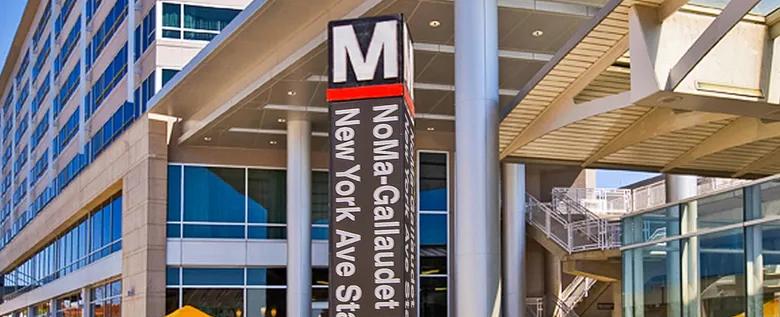




“The more connections we have to the people and places around our home, the healthier and happier we are and the longer we live.” –
Robert Putman, Harvard University Professor
www.WalkScore.com lists resources in your neighborhood, including:
• Dentist and doctor’s offices
• U.S. Post office
• Schools • Daycare • Grocery stores • Restaurants
Coffee shops
Delis
Bars
Park







Purchasing food locally helps reduce the carbon emissions associated with average groceries—some food travels up to 2,500 miles from farm to table. Additionally, fresh and local food is more nutrient dense than produce sitting on grocery store shelves for several days.
Your community offers access to fresh local produce from nearby farms at Farmer’s Markets, Greenmarkets or Community Gardens.
DC Farmers Market is located just 0.08 mi from your home, in Union Market.
FRESHFARM H Street NE Market is a farmer’s market located 1.0 mile away at the corner of H and 13th St. The market is open Saturdays year-round, from 9 AM to 12:30 PM.







Residents can stay active by taking the stairs, using fitness areas where available, bicycling, or visiting neighborhood parks and playgrounds. Here are some amenities near you:
Fitness Area A fitness room is located on the main roof level.
Stairwells Choose the stairs, conveniently located in the lobby, and burn calories instead of electricity.
Bicycling Bicycle storage is located in the garage. Bike paths can be found at https://ddot.dc.gov/page/bicycle-maps
Parks and Playgrounds The nearest park is Brentwood Hamilton Park, less than a quarter mile away. It contains an open field, tennis courts, and soccer nets.





Go green away from home! Your home is located near public transportation. Using buses and trains helps to reduce the pollution caused by personal automobiles.
Multiple bus lines run near your home, including the 90, 92, and X3 routes. Stops are located at intersection Florida Ave NE & 3rd St NE. For schedules and detailed bus maps, visit https://www.wmata.com/service/bus/
The NoMa-Gallaudet U New York Ave metro stop at 200 Florida Ave is just a 10 minute walk from your home. For schedules and detailed metro maps, visit https://www.wmata.com/service/rail/





Green power refers to electricity sourced more sustainably than traditional nuclear, natural gas, or coal-fired power plants. Examples of green power include photovoltaics (solar), wind, and ecologically sound hydrologic power (often called run-of-river hydro).
Many utilities today offer customers a choice to purchase some or all of their electricity from renewable sources. In addition, there are third party vendors that ‘offset’ traditionally sourced electrical power by funding green power in other locations. You can buy renewable energy credits from these vendors to help move the economy from fossil fuels to more sustainable choices.
Find Green-e certified renewable energy and carbon offset products anywhere in the country on their website: https://www.green-e.org/certifiedresources






• Clothes Washer – LG WM3400
• Clothes Dryer – LG DLE3400
• Dishwasher – Blomberg DW51600, Whirlpool WDT730PAH
• Garbage Disposal – Smart Choice SC05DISP01
• Bath Fan – Delta GBR80
• Kitchen Exhaust – Delta SLM80-110
• Ventilation – Fresh air fans operate continuously. If you experience any issues, contact maintenance.
• Bath fan controls – use the switches located in your bathroom to operate the bath fan on maximum speed whenever you shower or bathe.
• Kitchen fan controls– use the switch located by your stove to operate the kitchen fan whenever you boil or fry foods on electric/induction cooktops.
• Microwave Oven – Whirlpool WMH53521H, Whirlpool WMC30516H
• Range/Oven – Whirlpool WEE510S0FS
• Refrigerator – SMEG FC20XDNE, Whirlpool WRB322
• Thermostat – Daikin BRC1E73
• Heat Pump – Daikin FXTQ12TAVJUA, FXTQ18TAVJUA, FXTQ24TAVJUA, FXTQ30TAVJUA, or FXTQ36TAVJUA
• Water Heater – Bradford White RE250LN10
• Lighting– All lighting is LED. Replace bulbs only with LEDs.

A copy of the project checklist or certificate is inserted after this page.
